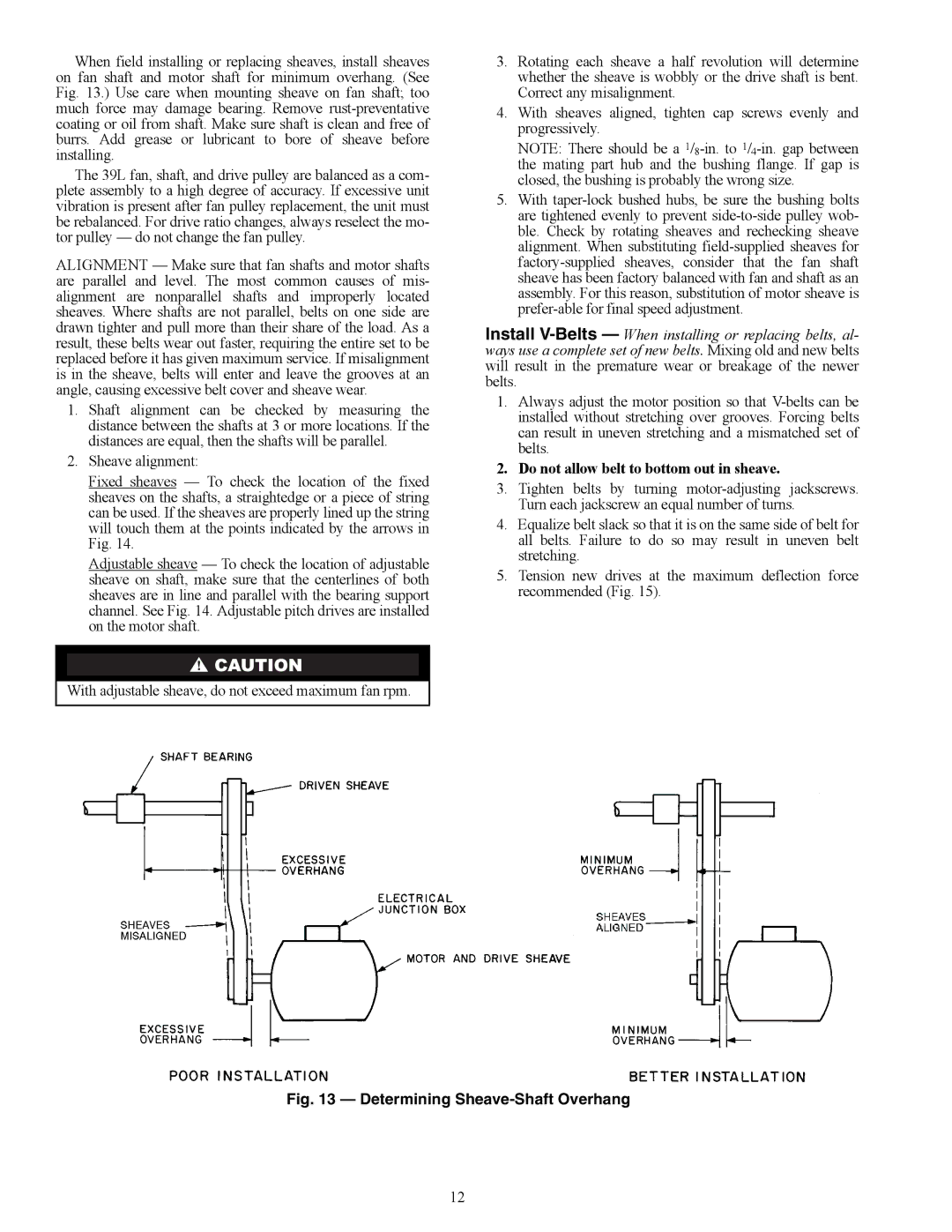39LG, 39LH03-25, 39LD, 39LE, 39LB specifications
The Carrier 39 series, encompassing models 39LA, 39LF, 39LC, 39LB, and 39LE, represents a prominent line of rooftop packaged units that combine robust performance, energy efficiency, and advanced technology for commercial applications. Designed to provide reliable heating and cooling solutions, these units stand out for their versatility and innovative features.The 39LA model offers high efficiency and flexibility, making it ideal for various building types. It incorporates advanced economizer capabilities that enhance indoor air quality while reducing energy costs. The unit is equipped with a dual-walled cabinet, which not only improves durability but also ensures quiet operation, making it suitable for noise-sensitive environments.
The 39LF model further enhances energy savings, featuring a unique hybrid heat pump system. This system allows for both heating and cooling through an integrated design, reducing the need for separate systems and streamlining maintenance requirements. The 39LF also boasts high Seasonal Energy Efficiency Ratio (SEER) ratings, contributing to lower operating costs without compromising comfort.
The 39LC variant excels in humid climates, employing advanced dehumidification technologies that effectively manage indoor moisture levels. This model is often utilized in environments such as gyms, restaurants, and hotels where humidity control is vital. Its variable-speed compressors adjust output based on demand, optimizing energy consumption while maintaining consistent comfort levels.
The 39LB model focuses on enhanced filtration and air quality improvements. Its engineered design accommodates high-efficiency particulate air (HEPA) filters, crucial for spaces that require stringent air quality standards. This model also includes smart controls that allow for precise temperature adjustments, ensuring optimal comfort in any setting.
Finally, the 39LE unit emphasizes user-friendly interfaces and smart technology integration. The built-in Wi-Fi capability enables remote monitoring and operation, allowing managers to adjust settings from anywhere, improving overall energy management. Additionally, the 39LE’s compatibility with Building Management Systems (BMS) facilitates seamless integration into existing setups.
In summary, the Carrier 39 series 39LA, 39LF, 39LC, 39LB, and 39LE present a comprehensive array of features designed for various commercial heating and cooling applications. With an emphasis on energy efficiency, advanced air quality management, and user-friendly technology, these units continue to set the standard for rooftop packaged units in the industry. Their innovative characteristics not only enhance comfort but also promote sustainability, making them a smart choice for modern commercial environments.

